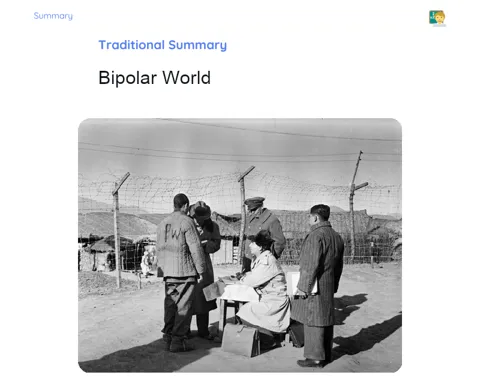Conservation and Degradation of the Environment: Challenges and Practical Solutions
Objectives
1. Identify the characteristics of natural and anthropogenic landscapes in the environment in which they live.
2. Understand human influence on the modification of these landscapes.
3. Indicate possible ways to conserve the environment.
Contextualization
The conservation and degradation of the environment are extremely important topics today. Natural landscapes, such as forests, rivers, and mountains, and anthropogenic landscapes, like cities and agricultural areas, make up the environment we live in. Human actions, through activities such as agriculture, industrialization, and urbanization, have a significant impact on the modification of these landscapes. Understanding these influences is essential for promoting practices that can conserve and protect our environment for future generations. For example, uncontrolled urbanization can lead to river pollution and the destruction of natural habitats, while sustainable agricultural practices can help preserve biodiversity.
Relevance of the Theme
The importance of the topic in the current context is immense. In a world where climate change and biodiversity loss are critical issues, understanding the relationship between human actions and their impact on the environment is fundamental. Professionals such as environmental engineers, biologists, and geographers work directly with environmental conservation, developing projects that minimize the impact of human activities and promote sustainability. Moreover, green technologies, such as solar and wind energy systems, are essential for conserving natural resources. Therefore, by learning about environmental conservation and degradation, students are preparing to contribute to sustainable solutions in the future.
Natural Landscapes
Natural landscapes are formed by elements of nature, such as forests, rivers, mountains, and oceans. These landscapes are not directly modified by human activities and are essential for maintaining biodiversity and natural cycles. The preservation of these areas is crucial for the sustainability of the planet.
-
Composed of natural elements such as vegetation, relief, and bodies of water.
-
Essential for maintaining biodiversity and natural cycles.
-
Preservation is crucial for the planet's sustainability.
Anthropogenic Landscapes
Anthropogenic landscapes are those modified or created by humans, such as cities, agricultural, and industrial areas. These modifications can bring benefits, such as economic development, but they can also cause negative impacts, such as pollution and the destruction of natural habitats.
-
Modified or created by humans.
-
Can include cities, agricultural, and industrial areas.
-
Can cause negative impacts, such as pollution and destruction of natural habitats.
Human Influence
Human influence on the environment is significant. Through activities such as urbanization, agriculture, and industrialization, humans modify natural landscapes, potentially causing environmental degradation. However, sustainable practices and green technologies can mitigate these impacts and promote environmental conservation.
-
Human activities include urbanization, agriculture, and industrialization.
-
Can lead to environmental degradation, such as pollution and deforestation.
-
Sustainable practices and green technologies can mitigate negative impacts.
Practical Applications
- Case studies on the recovery of degraded areas, such as the recovery of the Thames River in London, which underwent a de-pollution process and is now a success story.
- Conservation projects carried out by NGOs and governments, such as the creation of protected areas and national parks to preserve biodiversity.
- Companies adopting green technologies, such as using solar and wind energy, to reduce their environmental footprint and promote sustainability.
Key Terms
-
Environmental Conservation: Practices and methods used to preserve and protect natural resources and biodiversity.
-
Environmental Degradation: Deterioration of the environment due to human activities, resulting in loss of biodiversity and declining quality of natural resources.
-
Sustainability: Responsible use of natural resources to meet present needs without compromising the ability of future generations to meet their own needs.
Questions
-
How can daily choices, such as saving water and recycling, help conserve the environment?
-
In what ways can green technologies be implemented in your community to promote sustainability?
-
What are the biggest challenges in conserving natural landscapes, and how can we overcome them?
Conclusion
To Reflect
Throughout this lesson, we explored the importance of environmental conservation and degradation, understanding how human actions directly impact both natural and anthropogenic landscapes. We reflected on how small daily actions can significantly contribute to the preservation of our planet. Through practical and collaborative activities, we developed a deeper understanding of the need for sustainable practices and the use of green technologies. Remember that every choice we make, no matter how small it seems, has an impact on the environment. Therefore, it is essential to continue seeking ways to act consciously and sustainably, applying what we have learned to promote a healthier and more balanced future for everyone.
Mini Challenge - Green Mission: Conservation Project
Create an action plan to conserve a specific area, such as the school, neighborhood, or park.
- Form a group of 4 to 5 classmates.
- Choose a specific area to focus the project.
- Identify the main environmental issues in that area.
- Develop a detailed action plan with activities that can be implemented to conserve and improve that area.
- Prepare a brief presentation (3-5 minutes) to share your ideas with the class.



